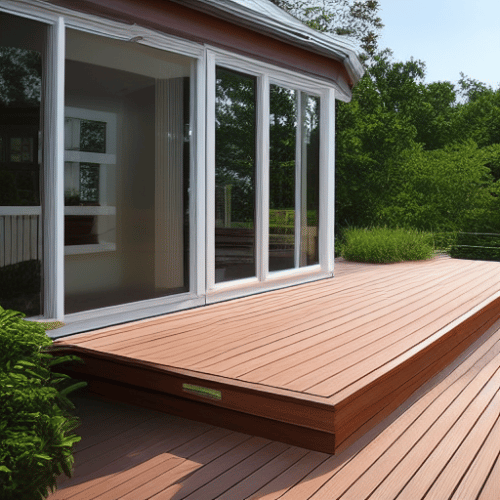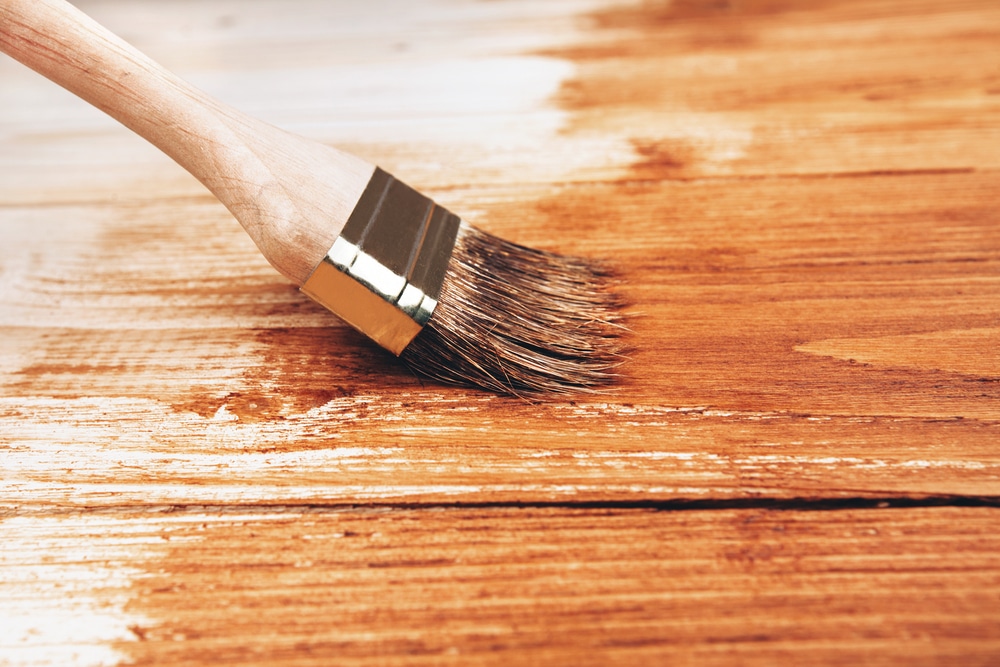Last Updated on
While decking oil can preserve your deck and reveal the natural colours of the wooden grain, it might start to fade after a certain time.
If you do not oil and maintain your wooden deck regularly, the bare wooden boards might be exposed to harsh weather conditions all year round. To prevent this from happening, you have to oil your wooden deck regularly to restore it to its previous state. Oiling your deck regularly also helps you maintain the wood grain.
So, how often should you oil decking?
Let’s take a look at different techniques that might help you maintain your decking board. We will also show you how long you should wait before you oil your timber deck.
What Causes a Deck to Start Weathering
While deck oil protects wooden boards from the effects of weather and preserves the natural oils, it might start fading after being exposed for a long time.
The main conditions that cause decks and the protective oils to weather naturally include:
Harsh UV rays – When your decking is continuously exposed to harsh UV rays, the rays might affect the decking oil. The oil will still protect the wooden grain; however, it won’t be as strong.
Rain – If a decking board is exposed to high quantities of rainfall, the water might affect the performance of the decking oil, and, with time, the decking oil might weather away, exposing the wood underneath.
Foot traffic – Heavy traffic can also make decking oil start to weather. If the decking board is subjected to a lot of pressure from foot traffic, the oil might start fading slightly, especially in the areas where people place their feet.
Signs of Faded Decking Oil
Are you wondering how you can know whether the decking oil has faded or not?
For starters, the rich and natural colour of the wood grain might start fading. Furthermore, the decking oil might lose its waterproofing properties.
You can do a test to check if the garden decking surface is water-resistant. First, fill a jar or a bucket with some clean water, then pour the water on different parts of the timber decking board. If water doesn’t seep into the timber deck surface, the protecting oil is still intact.
However, if the water penetrates the deck, your garden deck might have lost its water-resistant properties, meaning that it might be time for some deck maintenance.
After How Long Should You Oil Your Decking?

To maintain that rich and beautiful colour of a new deck, you must re-apply decking oils every 6-12 months. Ensure that you re-apply the oil on the wooden surface, even if it looks good and clean. Treating decking boards on a regular basis can increase the lifespan of the deck wood by keeping the wood nourished and offering year-round protection.
Moreover, if your home is located in an area with harsh climate conditions, you may have to re-apply decking oils on your timber deck regularly. However, before you re-apply the decking oil, we recommend that you do a water test to check whether the decking board is strong enough to handle different conditions or not.
The test should be performed after six months. If the timber deck is still in good condition, run another test after three months (9 months after the last application procedure).
If the timber deck is still in a superb state, perform the third test after three months (12 months after the last application).
Once you reach the 12-month mark, it is widely recommended that you re-apply the wooden oil or decking protector. The best decking oil will last for a long period without needing constant reapplications.
Re-Applying Decking Oil on a Wooden Surface
Most importantly, before starting any work on your deck area, we recommend that you complete the following steps first.
Read the Weather Forecast
Before you start with the restoration procedure, check the upcoming weather conditions and only apply oil in warm and dry weather conditions. It also helps uneven oil applications so that you end up with a smooth surface.
Look For the Oil That You Had Used Before
Once you’ve established when you will undertake this project, look for the decking oil that you used in the past. For example, if you had used Barrettine decking oil in the previous application, our own opinion is that you should use it again/be consistent in the choice of oil that you apply. If you apply another type of decking oil, it might not adhere to the timber deck. Do not use another decking treatment like decking stain or decking paint on your wooden surface.
Decking stain is not compatible with oil and might wear off if applied on a surface previously coated with decking oil. Not to mention, transparent stain or any other decking stains often peel off when they are applied to such surfaces.
Moreover, it may wear off after a short period, exposing the natural grain to bad weather conditions. Something else to keep in mind is that new decking oil might have a different shade, which doesn’t blend easily with the wood surface.
If you have a hardwood deck, you have to look for the oil that is compatible with the deck. Decks made from hardwood are naturally oily and might require a special preservative. Make sure that you choose decking oils, depending on the oils you used previously.
On a new deck and when it’s your first application, you can use whichever product you choose. The only thing to consider with new decks is whether it is pre-treated and, if so, what the wood was treated with so that you can make an informed product choice.
Wash the Deck
Once you find the right decking oil, move the plants and the furniture that might be on the deck to a safe place.
Next, clean the wooden surface by removing debris, grime, and dirt particles that might make the surface look untidy or uneven. Decking cleaners, a special cleaning solution, are the most suitable product for washing such surfaces. Some are especially great at getting rid of mould, and they don’t contain chemicals that will harm the wood.
If you’ve got one to hand, you can wash the deck with a pressure washer for a thorough clean before applying a fresh coat. However, we recommend that you adjust the pressure washer to a low-pressure setting to protect the timber.
Furthermore, do not place the nozzle too close to the wooden surface. It should be about half a metre away from the wooden surface.
Let It Dry Off
Once you finish cleaning the wooden surface, leave it to dry properly and don’t apply the oil to the deck straight away. The wooden boards may need two or three days to dry off completely.
Apply the Product of Your Choice
First, check if the boards have dried off completely before you start the whole process.
You can use various tools for oiling decking to get good results, including different types of brushes and various types of foam pads/rollers.
Once you select the tool you will use and have checked the application instructions; you can begin restoring the wooden surface. How much oil and how many coats you apply will depend on the wood and the product type.
Let the first thin coat of oil dry off completely before applying the second coat of oil. Work on three to four boards at once to not lose oversight over which sections you’ve finished.
If you have hardwood decking, you may find these boards don’t need as much oil as other types of wood.
After that, the wooden surface will be ready to use after two or three days. The best decking oils have UV protection properties to protect the timber’s surface from sun damage.
Decking Maintenance Tips
Here are some decking maintenance tips that may guide you as you are using your timber deck:
Clean the Deck Regularly
Wooden decks should be cleaned regularly to remove any particles that may cause long-term damage. As different wooden decks have different uses, the cleaning frequency might change from one deck to another.
Different types of tools can be used to clean decks. For instance, you can use a hard brush to eliminate the grime, debris, dirt particles and mould that might make the surface look unkempt. And something as simple as a regular sweep can go a long way in terms of upkeep.
Once you have swept, clean the deck thoroughly with water and, if you want to get superb results, wash the surface with a pressure hose. A cleaning solution like a decking cleaner can also make the whole procedure faster and easier.
Restore Some of the Damaged Parts
Since different parts of a wooden deck may be exposed to different weather conditions, some parts might weather faster so that the damage doesn’t spread to other parts, repair and restore it as quickly as possible, especially if it’s signs of rotting or mould.
If the defect is not too big, sand down the surface a little bit, then apply a decking restorer to that section. On the other hand, if the defect is too big, detach the board from the deck, then fasten a new board on the same spot.
Dealing with weathered parts during the early stages of the damage occurring makes it easier for you to avoid future complications.
Start Oiling Your Wooden Deck
The question for most people is how often should you oil decking? After reading this article, you should understand how long you have to wait before you oil your timber deck.
Decking oil maintains your deck and makes it look stylish. Not to mention, it can be applied on different types of decks, penetrating deeply into various types of timber to save the wood grain from adverse weather effects. It may take a little bit of elbow grease at times to get into all the small cracks and get it done properly, but your deck will look all the better for it in the end.
Ian loves everything that revolves around the home improvement niche. He loves trying out new home appliances. He has also handled a lot of equipment and has a lot of insight. Plus, he’s worked on various home improvement projects that became a success.
If Ian isn’t busy working on his latest project, you can find him reading up about another one!



